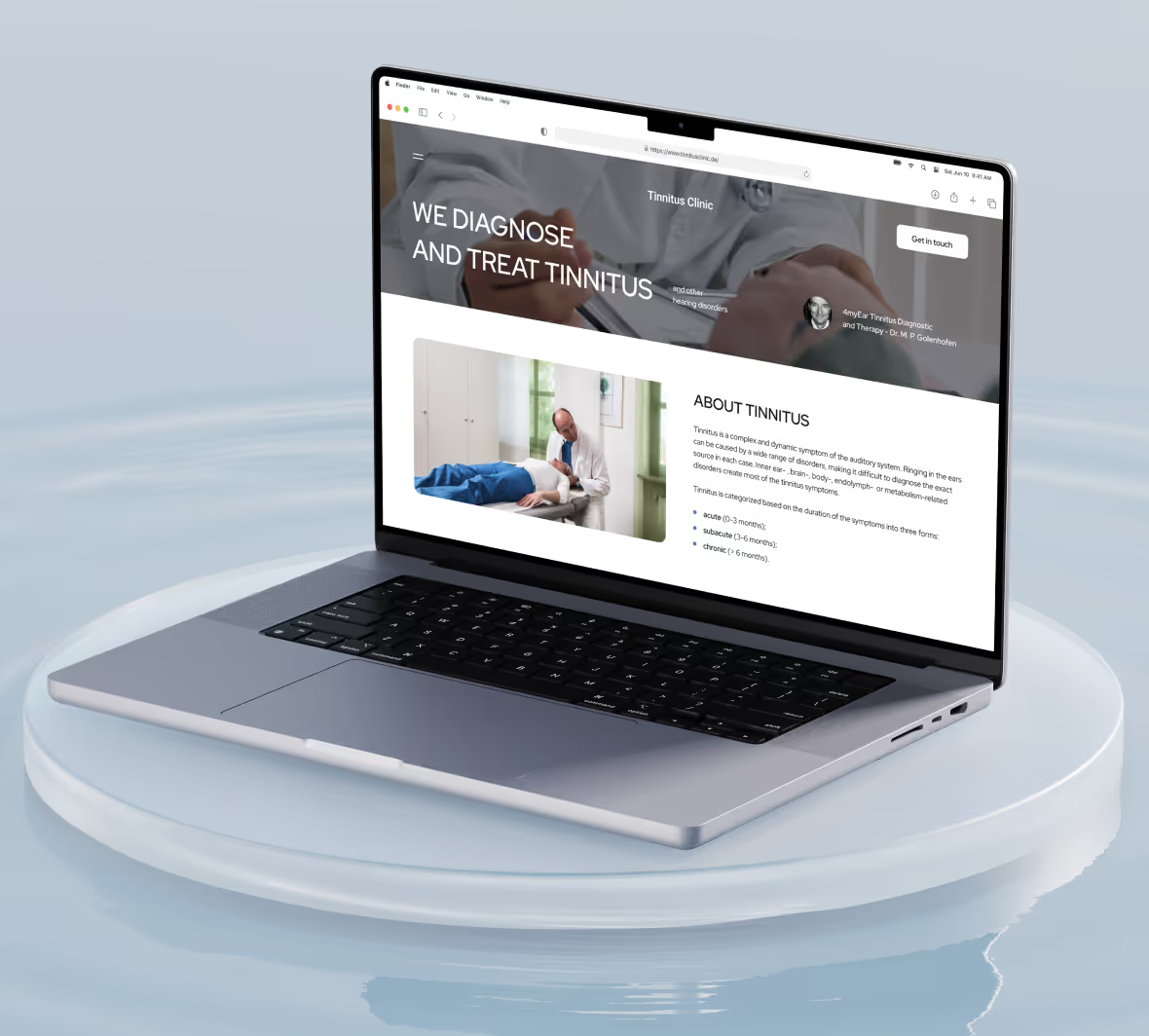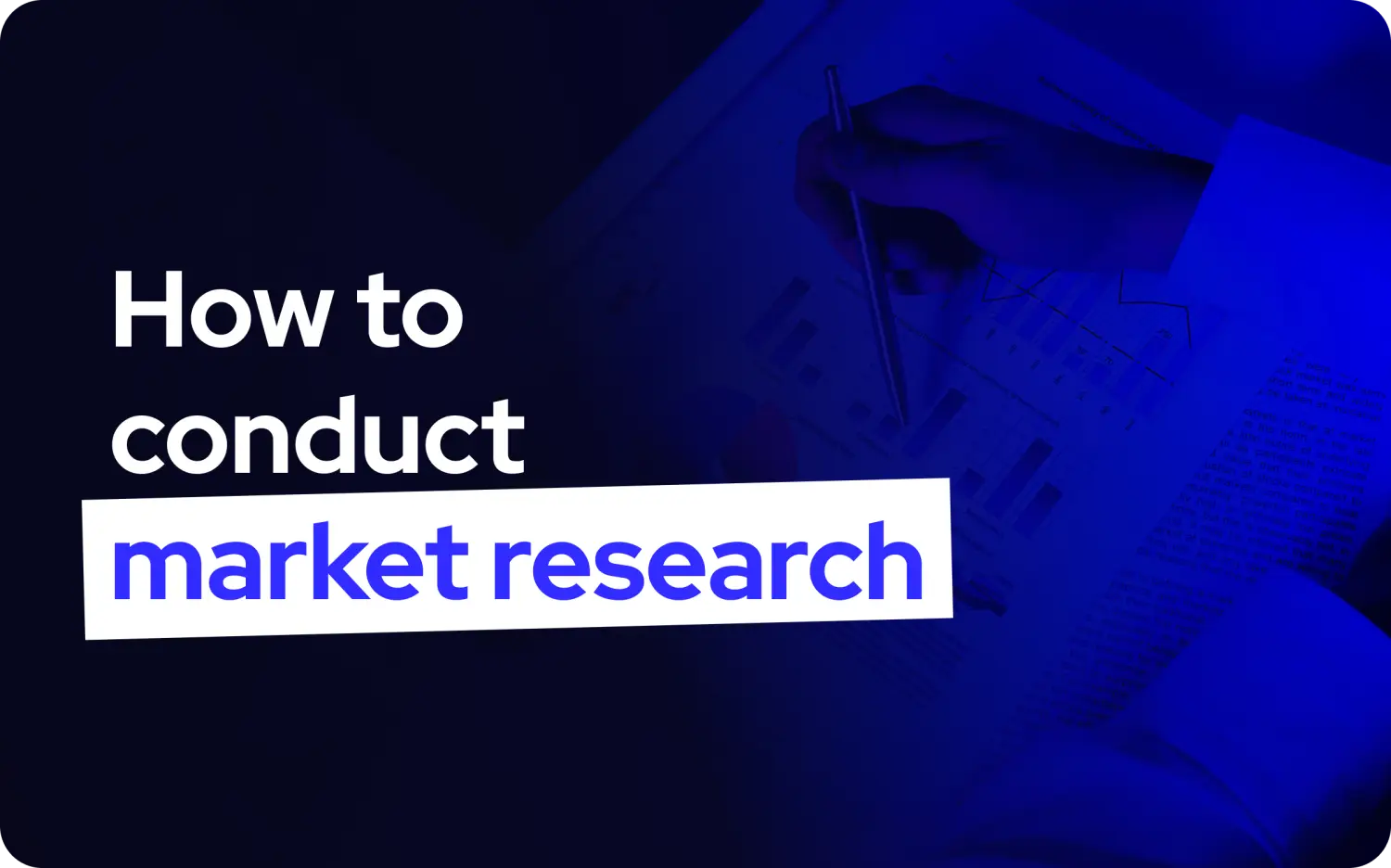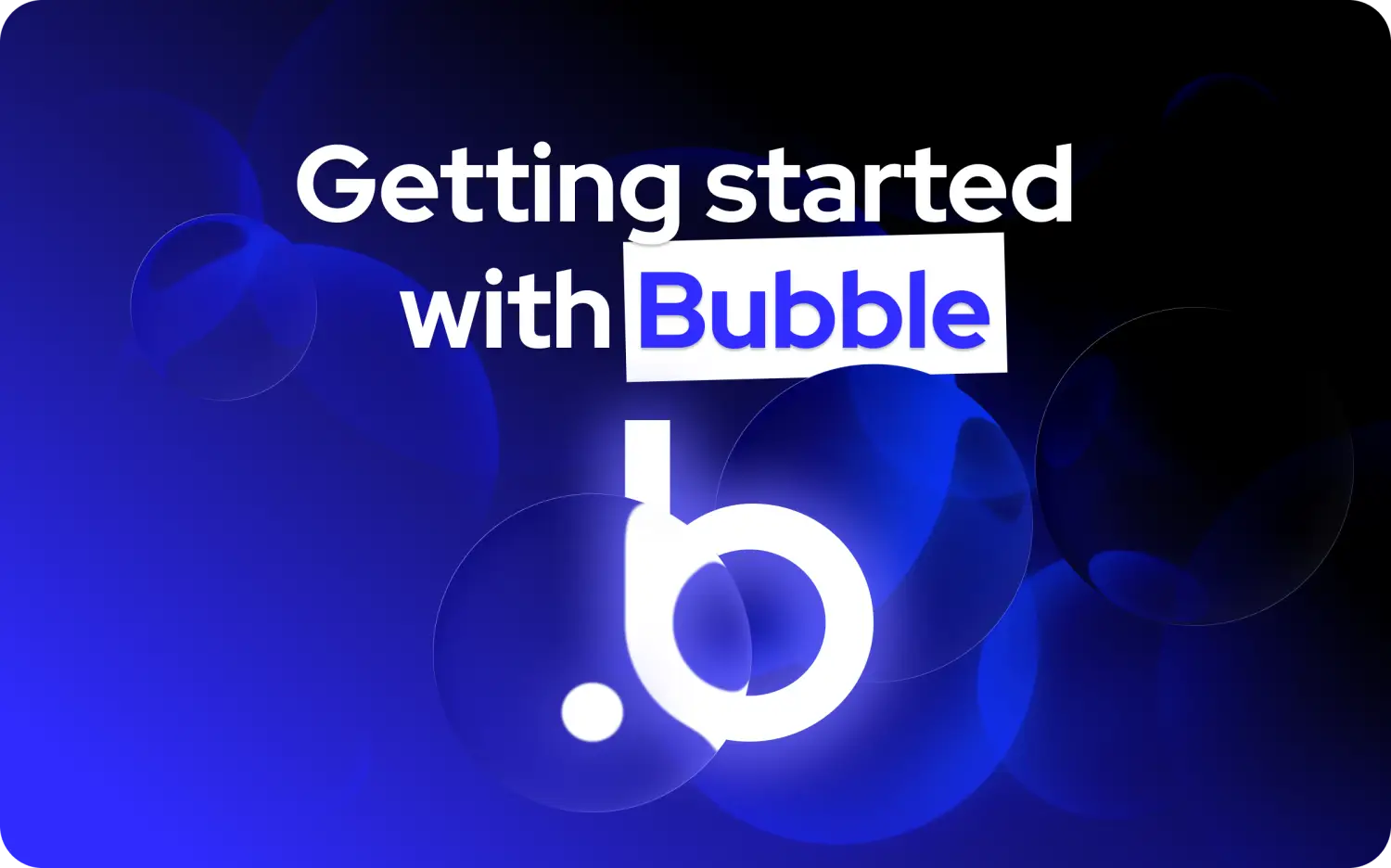
Building an MVP app is an intelligent way to bring your idea to life. Instead of sinking tons of time and money into a fully developed app, a Minimum Viable Product (MVP) allows you to create a version with enough features to attract early users and validate your idea. This isn’t just a good idea — stats back it. For example, a Product Development and Management Association study found that nearly 50 percent of new products fail within the first year of launch. However, this number drops significantly — to 14 percent — when products are opened to early, external feedback before launch.
Building an no-code MVP app is a great way to facilitate this process. In this guide, we’ll explore how to create an MVP app with a no-code approach.
Why Building an MVP is Crucial for Startups

What is an MVP?
An MVP (Minimum Viable Product) is a stripped-down version of an app or product that includes only the core features necessary to solve a specific problem for early users. The goal of an MVP is to test whether there is a market need for your solution and gather feedback before investing in a full-fledged product.
Key Characteristics of an MVP
Focused on Core Features
The MVP includes only the most essential features to validate your business idea.
Rapid Development
The idea is to quickly bring the product to market so it can be tested with real users as soon as possible.
User Feedback Driven
The MVP is designed to gather feedback, allowing startups to iterate and improve the product based on user needs and reactions.
Practical Example
Consider you want to create an app that helps users schedule fitness classes at local gyms. Instead of building a full-featured app with social media integration, payment gateways, and advanced filtering, you focus on the core feature—enabling users to view and book available gym slots in their area. This streamlined version would be your MVP, allowing you to validate whether users are interested in booking fitness classes online.
A. Validating Market Demand
The most important reason to build an MVP is to validate your idea's demand before investing time and resources. Many startups fail because they launch products that do not meet actual market needs. An MVP helps you test the waters by gauging whether users find value in your solution.
Real-World Insight
A widespread discussion on r/Entrepreneur highlights how several startups have failed because they launched without testing their product's market fit. One user shared their experience: "We went all-in on building an app without knowing if anyone would use it. After launch, we discovered the market demand wasn't there, and we had wasted thousands on development." This story underlines how an MVP can save startups from similar mistakes by providing early feedback on the product's viability.
Solution
Launching an MVP allows startups to test their core ideas with real users and collect feedback early. If there is demand, you can confidently proceed with development. If you need more time, you can pivot before spending significant resources.
B. Saving Development Costs
Building an MVP helps startups save costs by focusing on the essentials and skipping unnecessary features. Traditional app development can cost between $100,000 and $250,000 for a fully functional product, but an MVP allows you to start small, minimizing upfront costs and market time.
Practical Example
Consider you’re a startup developing a travel app. Instead of building an app with hotel booking, car rentals, and flights all at once, you focus on just one key feature—flight booking—as your MVP. This lets you launch quickly and test whether users are interested in the flight booking service before expanding to other features.
No-Code Development
Using no-code platforms like Bubble.io and Webflow further reduces development costs. With no-code development, even non-technical founders can build functional MVPs, significantly lowering costs compared to traditional coding methods. Minimum Code, for example, specializes in creating cost-effective MVPs using these platforms, ensuring you don’t break the bank before validating your idea.
Supporting Statistic
According to Lean Startup, MVP development can reduce initial development costs by up to 60%, making it an attractive option for startups with limited budgets.
C. Gathering Early User Feedback
Launching an MVP allows startups to get direct feedback from early adopters, helping refine the product based on real-world usage. This early-stage feedback is invaluable because it enables you to understand user pain points, preferences, and desires—allowing you to make data-driven decisions.
Challenge
One of the common challenges mentioned in r/Startup is getting honest feedback from early users. Many startups launch their MVPs but need help to get detailed and actionable responses from their audience. A user on the forum commented, “We launched our MVP, but the feedback we received was vague. Users hesitated to be too critical, so it was hard to know which areas needed improvement.”
Solution
To overcome this, startups should incentivize detailed feedback by offering exclusive features, early access, or discounts for future product releases. Building a community of early adopters can also foster open and honest communication. Minimum Code helps startups set up effective feedback collection processes, ensuring you get the insights needed to refine your MVP.
D. Reducing Time to Market
Speed is a competitive advantage for startups, and an MVP significantly reduces the time to market. By focusing on only the essential features, you can launch a working product quickly and gain traction before competitors.
Forum Insight
In discussions on r/LeanStartup, entrepreneurs frequently mention how the MVP approach helped them launch their products ahead of schedule. One user wrote, “Our competitor spent nearly a year developing their full product, while we launched an MVP in three months. By the time they launched, we already had a user base and valuable feedback, giving us a huge head start.” This highlights the importance of quick market entry, allowing startups to adapt to market demands faster than competitors.
Solution
By using no-code platforms like Bubble.io and partnering with Minimum Code, startups can reduce development time from months to as little as 4-6 weeks. This rapid development cycle ensures you can launch an MVP while your idea is fresh and relevant to the market.
E. Flexibility for Pivoting
One of the most significant advantages of an MVP is that it allows startups to pivot quickly if their initial assumptions are proven wrong. You can change your product without investing heavily in total development by receiving early feedback.
Challenge
Startups often need help overcommitting to their initial idea, even when feedback suggests changing course. Many founders become too emotionally attached to their original vision, making it challenging to pivot when necessary.
Solution
Launching an MVP keeps your approach flexible. If the market demands a different feature or user feedback indicates a significant shift, it’s easier to pivot with an MVP than a fully developed product. Startups should view their MVP as an experiment, not the final version of their product. Minimum Code helps startups remain agile by building scalable MVPs that are easy to modify and expand as market conditions change.
Quick Launches are Our Specialty
We are a no-code development agency tailored for non-technical entrepreneurs looking to launch B2B SaaS or service web apps quickly. Our expertise lies in using tools like Bubble.io, Xano.com, and Webflow to deliver MVPs within a month. Why you should work with us: We offer rapid development speed, cost-effectiveness compared to traditional methods, scalable and secure solutions, and full-service support from design to post-launch.
We're ideal for founders who've experienced lengthy traditional development cycles or need a technical co-founder. Our approach solves common pain points like needing more tech skills, no-code scalability, and security concerns, and the desire to focus on business while we handle the tech. With Minimum Code, you can finally bring your long-held business idea to life quickly and efficiently without breaking the bank. Bring your long-held business ideas to life with us! Reach out today for a free product discovery & scoping session, and see how our no-code development agency can help you turn your vision into reality.
Step-by-Step Guide to Building Your MVP App
.jpeg)
Define Your Business Goals and Problem Statement
Before building, you must clearly understand what your MVP app will achieve. This involves defining your business goals and identifying the problem your app will solve for users.
Define the Core Problem
What specific problem are you solving? For example, if you're building a fitness app, users might need help finding fitness classes that fit their schedule.
Set Clear Business Goals
These objectives define what you want to achieve with your MVP, such as gathering 100 beta users, validating market demand, or securing funding after the MVP launch.
Practical Tip
Use a problem-solution framework to clearly understand the issue you're addressing and how your MVP will provide a solution. This clarity will guide the entire development process and ensure you're focused on solving a specific, high-value problem.
Key Questions to Ask
- What is the core value my MVP provides to users?
- Is this a must-have solution for my target audience, or just a nice-to-have?
- What will success look like for my MVP (e.g., user sign-ups, feedback, revenue)?
Conduct Market Research
Before investing time and resources into building an MVP, validating your idea through market research is crucial. Look for existing solutions in the market and determine how your MVP will differentiate itself.
Target Audience Research
Identify your target audience and understand their pain points, preferences, and behaviors. Gather insights using surveys, social media polls, and forums like Reddit or Quora.
Competitor Analysis
Analyze similar apps in the market to understand their strengths and weaknesses. Tools like SEMrush or Ahrefs can help you see what competitors focus on, while platforms like G2 and Capterra can provide customer feedback on what’s missing from existing solutions.
Practical Tip
Engage with potential users through online communities or social media groups to understand their needs early. Ask direct questions such as, "What features would make you use a fitness app daily?" This feedback will help shape your MVP’s core features.
Solution
Use insights from market research to differentiate your product. For example, if competitors lack real-time scheduling for fitness classes, make that a key feature in your MVP.
Key Questions to Ask
- Who are my primary competitors, and what features do their apps offer?
- What are the unmet needs in the market that my MVP can address?
- How will I position my MVP to stand out in a crowded market?
Outline Core Features
After conducting market research, it’s time to outline the core features that your MVP will offer. These features should address your problem while keeping the scope manageable to ensure a quick launch.
List Essential Features
Start by listing all the features you’d like in your app, then narrow it down to the must-haves. A good MVP should include only the features necessary to solve the core problem and deliver value to early users.
Prioritize Functionality
Prioritize user functionality over design or secondary features. For example, in a fitness app MVP, your core feature might be the ability to book fitness classes rather than advanced filters or user profiles.
Practical Tip
Use the MoSCoW method to prioritize features into categories:
- Must-Haves: Essential features for the app to function.
- Should-Haves: Important but optional for the initial launch.
- Could-Haves: Nice to have, but can wait until later.
- Won’t-Haves: Features that are not relevant to this MVP version.
Solution
Keep your MVP lean and focused. Too many features can lead to delayed launches, increased costs, and user confusion.
Key Questions to Ask
- What is the core value proposition that my MVP will deliver to users?
- Are all features necessary for solving the core problem, or can some be added later?
Choose the Right No-Code Development Platform
Choosing the right platform ensures your MVP app is scalable and functional. No-code platforms like Bubble.io, Webflow, and Xano provide potent tools for building MVPs without needing extensive coding skills.
Evaluate Platform Features
Compare platforms based on your MVP's needs. Bubble.io is excellent for custom workflows and database management, while Webflow is ideal for visually rich designs. Xano offers strong back-end support if your MVP requires complex data handling.
Scalability
Ensure that the platform you choose will support your app as it grows. Startups often make the mistake of choosing a platform that can't scale, leading to costly migrations later.
Minimum Code Integration
Minimum Code specializes in helping non-technical founders choose the best no-code platform for their MVP. Our team can evaluate your business needs and select the tools to build your MVP quickly while ensuring long-term scalability.
Practical Tip
If your MVP focuses on functionality over design, Bubble.io might be the best choice. However, if you're building an e-commerce MVP, Webflow’s design capabilities and integration options may be more suitable.
Key Questions to Ask
- Does this platform support the core features I need for my MVP?
- Will this platform scale as my user base grows?
- What is the learning curve for the platform, and do I have the resources to manage it?
Build the MVP Prototype
Building the prototype is where you turn your ideas into a tangible product. The goal is to create a working version of your app with just enough functionality to test it with real users.
Design the User Interface (UI)
While the design doesn’t need to be perfect at this stage, it should be intuitive and easy to navigate. Focus on creating a simple, clean UI that allows users to interact with the core features without friction.
Develop Core Features
Use your no-code platform to implement the core functionality of your app. For example, if you’re building a fitness app, users should be able to browse available classes, select a time slot, and make a booking.
Practical Tip
Don’t aim for perfection—functionality over aesthetics is critical here. The goal is to create a usable product that solves the core problem, not the app's final version.
Solution
Minimum Code can guide you through this process, ensuring that your prototype is built quickly and effectively without getting bogged down by unnecessary features.
Key Questions to Ask
- Can users easily navigate and use the app’s core features?
- Does the MVP prototype solve the core problem identified earlier?
Test and Collect User Feedback
Once your MVP prototype is built, it’s time to test it with real users to gather valuable feedback. This will help you understand what’s working, what’s not, and what needs to be improved.
Recruit Beta Testers
Launch your MVP to a small group of early adopters or beta testers. These users should ideally match your target audience.
Collect Feedback
Gather feedback using surveys, interviews, and analytics tools. Focus on user pain points, usability issues, and areas for improvement.
Practical Tip
Offer incentives to beta testers for their feedback, such as discounts on future versions or early access to new features. This encourages more detailed and constructive feedback.
Solution
If gathering feedback feels overwhelming, Minimum Code can help you set up automated processes to collect and analyze user data, making it easier to iterate on your MVP.
Key Questions to Ask
- Can users complete the core tasks the app is designed for?
- What frustrations or pain points are users encountering?
Best Practices and Common Mistakes to Avoid When Building an MVP

Keep It Simple: Focus on Core Features
Building a minimum viable product solves a specific problem for your users using the most essential features. There is a better time to make a full-featured product. Instead, focus on the core value proposition—the one thing your product does well that addresses your users' pain points.
How to Do It
- Identify the Core Problem: Before starting development, identify the most critical problem your MVP needs to solve.
- Limit the Features: List all possible features and prioritize only the must-haves. After you validate the MVP, you can add anything that doesn’t directly contribute to solving the core problem.
Practical Example
If you’re building a fitness app, focus solely on the class booking feature. The ability to review instructors or integrate with other apps can come later after your MVP proves that users are interested in booking classes.
Why It Matters
Adding too many features too early leads to longer development times, higher costs, and user confusion. Keeping your MVP simple minimizes risk and brings your product to market faster.
Test Early and Often with Real Users
One of the main goals of an MVP is to gather feedback from actual users as quickly as possible. Testing early with your target audience helps you understand whether your product solves their problem and provides insights into how it can be improved.
How to Do It
- Recruit Early Users: Reach out to your target audience and offer them access to your MVP in exchange for feedback. Early adopters are often more forgiving and willing to provide constructive criticism.
- Use Analytics: Implement basic analytics to track user behavior in your MVP. Tools like Google Analytics, Mixpanel, or Hotjar can provide insights into which features users engage with most, where they drop off, and what frustrates them.
Practical Example
If you’ve built a scheduling app for freelancers, offer early access to a select group of freelance professionals. Use tools like SurveyMonkey or Typeform to collect their feedback on usability and review session data from Hotjar to understand how they navigate the app.
Why It Matters
By testing early, you avoid building features users don’t need, saving you time and money in the long run. According to Lean Startup methodology, startups that test their MVPs early are more likely to succeed because they can make necessary adjustments based on real-world feedback.
Set Clear Success Metrics
To measure the success of your MVP, you need to define key performance indicators (KPIs) that will show whether your product is achieving its intended goals. Success metrics help you evaluate whether your MVP solves the problem it set out to address and whether users find it valuable.
How to Do It
1. Define Your KPIs: Your KPIs will depend on your MVP’s goals. Common metrics include:
- User Engagement: Track how often users return to the app and how long they use it.
- Feature Usage: Measure how frequently users interact with the core feature of your MVP.
- User Feedback: Review qualitative data from user surveys and feedback forms.
2. Set a Time Frame: Determine how long you’ll test your MVP before evaluating its success. Typically, this might be between 3 and 6 months, depending on your industry and product type.
Practical Example
For a SaaS MVP, a key metric might be the number of users who sign up for a free trial and how many continue using the app after the trial period. A second metric could be the rate of feature usage, which shows which parts of the product are most valuable to users.
Why It Matters
Setting clear success metrics ensures you have concrete data to determine whether to iterate, pivot, or proceed with scaling your product. These metrics are necessary for assessing if your MVP is successful.
Iterate Based on User Feedback
The feedback you collect from users should directly inform your next steps. Iteration is key to refining your MVP and ensuring its success, whether it's tweaking a feature, improving the user experience, or pivoting your product entirely.
How to Do It
- Analyze Feedback: Review user feedback to identify common themes. Look for patterns in users' likes and dislikes and specific pain points they encounter when using your MVP.
- Prioritize Changes: Not all feedback needs to be acted on immediately. Focus on the changes most impacting the user experience and overall product functionality.
Practical Example
Let’s say you receive feedback from your beta testers that the login process in your app is too complicated. Simplifying this process should be a priority because it’s crucial to the user experience. However, this can be addressed later if users suggest cosmetic changes, such as a new color scheme.
Why It Matters
Continuous iteration ensures that a product aligns with user needs. According to Harvard Business Review, startups that iterate frequently based on user feedback have a 60% higher chance of building a successful product.
Common Mistakes to Avoid When Building an MVP
1. Building Too Many Features
One of the startups' most prominent mistakes is trying to build a product that does everything from the outset. This critical error can derail your MVP by increasing development time and costs while making the product harder for users to adopt.
Why It’s a Problem
- Longer Development Time: Adding fewer features delays your time to market, allowing competitors to get ahead.
- User Confusion: Too many features can overwhelm early users, causing them to abandon your product because it feels complicated.
- Higher Costs: More features mean more development hours, which can quickly deplete your budget.
Solution
- Focus solely on the core features that solve your users' main problem. Always ask yourself, “Is this feature necessary to validate my MVP, or can it be added later?”
Practical Example
- A startup building an e-commerce MVP should include features like wish lists, user profiles, and advanced filtering. However, these features aren’t essential to the core goal of allowing users to browse and purchase items. Focus on the basic functionality first—allowing users to easily browse products and make purchases—and leave the extra features for later iterations.
2. Ignoring User Feedback
Some startups launch their MVPs but must adequately listen to their users' feedback. This can lead to building a product that doesn’t solve the user’s problem or, worse, alienating the target audience by not addressing their concerns.
Why It’s a Problem
- Missed Opportunities: Feedback from early adopters is crucial for understanding how to improve your product. Ignoring feedback means missing valuable insights.
- Product Misalignment: Without feedback, you risk building a product that doesn’t meet users' real needs.
Solution
- Actively seek out and engage with early users. Provide them with accessible channels to submit feedback (e.g., surveys, feedback forms, or in-app prompts) and show their input is valued by implementing changes based on their suggestions.
Practical Example
- After launching your MVP, you discover users need to find the registration process shorter. Based on your feedback, address this by simplifying the registration steps. This improves user experience and demonstrates that you listen to your audience.
3. Skipping Market Research
Failing to conduct thorough market research is a common mistake that can lead to building a product no one wants. Many founders get too attached to their ideas and assume users will love them without validating the market.
Why It’s a Problem
- Wasted Resources: Building a product without understanding market needs can waste time, money, and effort if there’s no demand.
- Competitor Blind Spots: Without researching competitors, you may unknowingly develop a product that already exists or miss critical differentiators that would make your product stand out.
Solution
- Conduct market research before development begins. Use tools like Google Trends, Ahrefs, or SEMrush to analyze market demand and identify competitor strengths and weaknesses.
Practical Example
- You plan to launch a meal-planning app. Before diving into development, you use Google Trends to determine if meal-planning apps are growing in demand. You also analyze top competitors to see what features they offer and what users complain about. This research helps you identify gaps in the market which your MVP can address.
4. Launching Too Late
Another common pitfall is waiting too long to launch your MVP because you want it to be “perfect.” An MVP is supposed to be a minimal version of your product, so launching early allows you to test, learn, and iterate faster.
Why It’s a Problem
- Missed Market Opportunities: Delaying your MVP launch allows competitors to gain traction and users.
- Lost Time and Resources: Perfecting every detail can lead to analysis paralysis, where the product never gets launched because it’s never “ready enough.”
Solution
- Embrace the idea that your MVP won’t be perfect. Launch early and gather feedback from users to make improvements over time. Focus on ensuring the app is functional and solves the core problem. Let user feedback guide future improvements.
Why No Code? Quick Launches are Our Specialty
We are a no-code development agency tailored for non-technical entrepreneurs looking to launch B2B SaaS or service web apps quickly. Our expertise lies in using tools like Bubble.io, Xano.com, and Webflow to deliver MVPs within a month. Why you should work with us: We offer rapid development speed, cost-effectiveness compared to traditional methods, scalable and secure solutions, and full-service support from design to post-launch.
We're ideal for founders who've experienced lengthy traditional development cycles or need a technical co-founder. Our approach solves common pain points like needing more tech skills, no-code scalability, security concerns, and the desire to focus on business while we handle the tech. With Minimum Code, you can finally bring your long-held business idea to life quickly and efficiently without breaking the bank. Bring your long-held business ideas to life with us! Reach out today for a free product discovery & scoping session, and see how our no-code development agency can help you turn your vision into reality.
Related Reading
How Minimum Code Can Help You Build and Scale Your MVP

1. Rapid MVP Development Using No-Code Platforms
No-code platforms like Bubble.io, Webflow, and Xano allow startups to build fully functional MVPs without the traditional complexities of software development. Minimum Code leverages these powerful tools for rapid, efficient growth, cutting time from months to weeks.
No-Code Tools
Minimum Code leverages Bubble.io for building complex workflows and database-driven apps, Webflow for creating highly customizable, visually appealing apps, and Xano for managing scalable backend operations.
Efficiency
By using no-code platforms, Minimum Code eliminates the need for traditional coding, significantly reducing development time and costs. Traditional development processes can take 6-12 months, but with Minimum Code, MVPs can be built in as little as 4-6 weeks, allowing you to get to market faster.
Why It Matters
The speed at which you can launch an MVP is critical for testing market demand and iterating based on user feedback. Minimum Code’s no-code approach ensures your startup can quickly validate its business idea, make adjustments, and outpace competitors.
Practical Example
Consider you a startup building a B2B SaaS tool for project management. With Minimum Code, you can make the core features—task assignment, progress tracking, and reporting—in just a few weeks using Bubble.io. The MVP is quickly launched to test whether businesses find value in your solution, allowing you to gather feedback and iterate without the usual delays of traditional development.
2. Cost-effective development with Minimal Overhead
MVP development doesn’t have to break the bank. Using no-code tools, Minimum Code offers cost-effective solutions that help startups build MVPs at a fraction of the cost of traditional development.
How It Works
Minimum Code can build your MVP for $5,000 to $30,000 by removing the need for a large development team, depending on the project’s complexity. This drastically reduces the upfront financial burden for startups.
Reduced Maintenance Costs
Because no-code platforms are cloud-based and handle much of the backend infrastructure, the ongoing maintenance costs are significantly lower than custom-built apps. This ensures you’re not spending resources on expensive technical upkeep.
Why It Matters
Startups must preserve capital while testing their ideas, and spending too much upfront can limit growth opportunities. Minimum Code ensures you launch an MVP quickly and affordably, enabling you to reinvest savings into marketing, product iteration, and user acquisition.
Practical Example
A startup founder with a limited budget uses Minimum Code to build a marketplace MVP for connecting freelancers with clients. The total development cost is $15,000, significantly lower than the $100,000+ estimates they received from traditional agencies. With these savings, the startup can allocate more of its budget to marketing the MVP and driving user acquisition.
3. Full-Service Support from Design to Post-Launch
Building and scaling an MVP requires more than development—it involves product design, user testing, feedback loops, and continuous iteration. Minimum Code offers full-service support, guiding startups through every phase of the MVP lifecycle.
How It Works
Minimum Code handles everything from initial MVP design and prototyping to development and deployment. The agency provides ongoing support for UI/UX design, database architecture, and third-party integrations, ensuring your MVP is functional, user-friendly, and scalable.
Post-Launch Iteration
Once your MVP is live, Minimum Code offers continuous support for gathering user feedback and making data-driven updates. The team helps implement changes, add new features, and refine the product based on user needs.
Why It Matters
Having a single partner manage the entire MVP process means there’s no need to juggle multiple vendors or freelancers. Minimum Code covers the technical complexities, allowing founders to focus on product strategy, user growth, and customer engagement.
Practical Example
After launching its MVP, a health tech startup receives user feedback requesting a better search feature for finding specialists. Minimum Code quickly iterates on the MVP by adding this feature based on user input, leading to an improved user experience and higher retention rates. Post-launch support from Minimum Code ensures the MVP evolves according to real-world usage, keeping the product competitive.
4. Scalability and Future-Proofing
Building a successful MVP is only the beginning—scaling it into a robust, fully-featured product requires careful planning. Minimum Code ensures your MVP is built with scalability in mind so you can add new features, handle more users, and integrate with other services as your product grows.
How It Works
By using Xano as a backend platform, Minimum Code ensures that your MVP can scale to handle increasing users, data, and transactions. Whether you start with a small user base or grow to thousands of active users, the architecture is designed to accommodate growth.
Adding Features Post-MVP
Once your MVP is validated, Minimum Code helps you add advanced features such as payment gateways, analytics dashboards, or third-party integrations (e.g., with CRM tools or social media platforms). This ensures your MVP evolves into a fully functional product as your business scales.
Why It Matters
Many MVPs fail because they aren’t built to scale, leading to technical debt and the need for costly rebuilds down the line. Minimum Code prevents this by ensuring your MVP is designed to grow with your business, minimizing the need for significant overhauls as you scale.
Practical Example
A startup launching a subscription-based e-learning platform with Minimum Code initially focuses on building a course sign-up system as the core MVP feature. After gathering user feedback and validating demand, Minimum Code smoothly integrates automated billing, live streaming, and certification tracking as the platform scales to thousands of users.
5. No-Code Expertise with Industry-Specific Solutions
Not all MVPs are created equal—different industries require different features, compliance standards, and user experiences. Minimum Code’s team has expertise across various sectors, ensuring your MVP is functional and aligned with your industry's needs.
How It Works
Tailored Solutions: Whether you’re building a B2B SaaS product, a marketplace platform, or a health tech app, Minimum Code tailors the no-code platform and development process to meet your business's unique needs.
Compliance and Security
The minimum code ensures that your MVP adheres to industry-specific compliance standards, such as HIPAA for healthcare or GDPR for data protection, giving you peace of mind as you scale.
Why It Matters
Startups often face complex industry challenges such as security regulations, data privacy, or user authentication. Minimum Code has the expertise to navigate these challenges, allowing you to focus on building your business rather than worrying about technical complexities.
Practical Example
A fintech startup working with Minimum Code needs its MVP to comply with strict data protection regulations while offering a smooth user experience. Minimum Code builds the MVP using Xano and integrates encrypted data storage, ensuring security and compliance.
Get a Free Product Discovery & Scoping for Your App Idea Today
No code development allows you to build a web app without writing any code. With no code tools, you can visually create the app by dragging and dropping elements to build the user interface and configure the logic behind the scenes to make the app work. No code tools have come a long way in recent years. They now offer the features, functionality, and customization options needed to build fully functional web apps. As a result, many no-code tools are comparable to traditional development frameworks regarding scalability and performance. If you want to make a minimum viable product (MVP) for your business idea, no-code development is the quickest way to get your app to market.
Here are five benefits of no-code MVP development you can expect when working with a no-code development agency.
1. Get Your MVP to Market Fast
The most significant advantage of no-code development is speed. You can create an MVP with no code tools in a fraction of the time it takes to build an app from scratch. Instead of spending months or even years developing your app, you can reduce that timeline to just a few weeks with no code.
2. Save Money By Choosing No Code Development
Another benefit of no-code MVP development is cost savings. The faster you can build your app, the less you will pay in development costs. With no code development, you eliminate the need to hire a team of coders and can instead focus on business operations while a no-code agency builds your app.
3. Create Scalable and Secure Apps With No-Code Tools
The common misconception is that no-code apps must be more robust to support actual business use. This misconception stems from the early days of no-code development when these tools lacked the features and functionality to build complex applications. Today, this is far from the truth. No-code tools are scalable and secure, making them suitable for building business applications.
4. Get Full-Service Support for Your Project
You get full-service support for your project when you work with a no-code agency. This means you can hand over the technical aspects of your app development project to a team of experts and focus on your business. With no code development, you don’t have to worry about learning how to use a new technology. Instead, the team at the no-code agency will manage your project and keep you in the loop throughout the entire process.
5. No Code Development Is Perfect for Non-Technical Entrepreneurs
Building an MVP can be daunting if you don’t have a technical background. This is especially true if you have little to no experience with coding or app development. What makes matters worse is that without an MVP, you may be unable to attract a technical co-founder to help you build your app. No code development solves this problem. With no code tools, you can create an app prototype with minimal technical skills. Furthermore, working with a no-code development agency eliminates the need for a technical co-founder, as the agency will fill this role.

Ready to build your product?






.avif)


